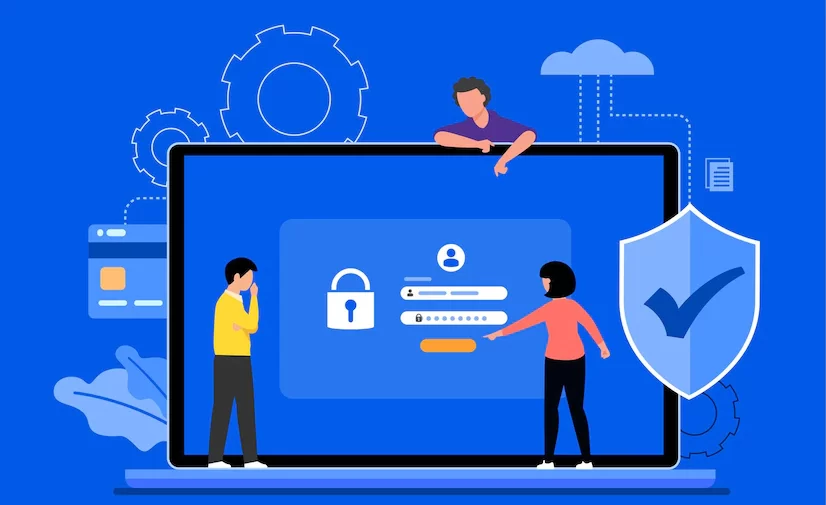What is Two-Factor Authentication, and How Does It Improve Security?
What is two-factor authentication?
This is a form of authentication that requires the user to provide two different pieces of evidence to verify their identity, such as entering a password and then receiving an automated text message with a one-time code. This process helps to deny access to unauthorized users while providing an extra layer of security for those who are authorized. 2FA improves security by adding steps in the authentication process and reducing the possibility of someone successfully accessing an account without authorization.
By requiring both something the user knows (their credentials) and something they possess (a mobile device or code generator), it creates an additional barrier to protect against malicious attempts to gain access. Having another factor in the authentication process also makes it much harder for attackers to guess login credentials since they would need access to both pieces of evidence.
Additionally, users who use 2FA have better protection against phishing attempts and cannot be tricked into sharing sensitive information through fraudulent websites or emails. Furthermore, suppose any one component of 2FA is compromised, such as a phone number being stolen. In that case, users will still have the other factor available for verification, making it more difficult for attackers to gain access. So, you might know now, what is two factor authentication?
Setting Up Two-Factor Authentication for Your Business
Importance of Implementing 2FA in Your Business
- Enhanced Security: Implementing 2FA adds an extra layer of security to your organization’s accounts and systems, making them significantly more resilient to cyber threats such as phishing attacks, brute force attacks, and credential stuffing.
- Mitigation of Password-Based Vulnerabilities: Passwords alone are no longer sufficient to protect against unauthorized access due to the prevalence of data breaches and password leaks. 2FA mitigates the risks associated with password-based vulnerabilities by requiring an additional form of authentication.
- Compliance Requirements: Many regulatory standards and industry guidelines, such as GDPR, HIPAA, and PCI DSS, require organizations to implement multi-factor authentication as part of their security protocols. By adopting 2FA, businesses can ensure compliance with these regulations and avoid potential penalties.
- Protection of Sensitive Data: Businesses often deal with sensitive information, including customer data, financial records, and intellectual property. Implementing 2FA helps protect this data from unauthorized access, reducing the risk of data breaches and reputational damage.
Steps to Implementing 2FA in Your Business
Now that we understand the importance of 2FA let’s explore the steps involved in implementing it within your organization:
Step 1: Assess Your Current Security Measures
Before implementing 2FA, it’s essential to assess your organization’s current security measures and identify any vulnerabilities or weaknesses. Conduct a thorough review of your existing authentication methods, access controls, and security policies to determine areas for improvement.
Step 2: Choose the Right 2FA Solution
There are various 2FA solutions available, ranging from SMS-based codes and mobile authenticator apps to hardware tokens and biometric authentication. Evaluate your organization’s specific needs, budget, and security requirements to choose the most suitable 2FA solution.
Step 3: Roll Out 2FA Across Your Organization
Once you’ve selected a 2FA solution, it’s time to roll it out across your organization. Develop a comprehensive rollout plan that includes training sessions for employees, communication of the new security measures, and support resources for any issues or questions that may arise.
Step 4: Enforce 2FA Policies and Best Practices
To ensure the effectiveness of 2FA, it’s crucial to enforce policies and best practices related to its use. Require all employees to enable 2FA for their accounts, mandate periodic password changes, and educate users about the importance of safeguarding their authentication credentials.
Step 5: Monitor and Update 2FA Settings Regularly
Security is an ongoing process, and it’s essential to monitor and update your 2FA settings regularly. Keep track of login attempts, review access logs for any suspicious activity, and promptly address any security incidents or breaches that may occur.
Implementing Two-Factor Authentication is a critical step in enhancing the security of your business’s accounts and systems. By requiring users to provide two different authentication factors, 2FA significantly reduces the risk of unauthorized access and helps protect sensitive information from cyber threats. Follow the steps outlined in this guide to successfully implement 2FA within your organization and strengthen your overall security posture. Remember, in today’s digital landscape, proactive measures such as 2FA are essential for safeguarding against evolving cyber threats.
Benefits of Using Two-Factor Authentication For All Your Accounts
Two-factor authentication (2FA) is a powerful security technique that gives an extra layer of protection to your online accounts. It requires two sets of credentials: something you know and something you have. By combining these two authentication factors, 2FA helps protect your accounts from unauthorized access. This added security allows you to keep your confidential data safe and secure against malicious actors and hackers.
With 2FA, when you try to log in to an account, you are asked for additional pieces of information, such as a unique code or biometric data. This code can be sent to your mobile phone or another device associated with the account to verify the identity of the person attempting to log in. Requiring two pieces of information before granting access makes it much harder for attackers or malicious actors to break into user accounts.
Benefits of Two-Factor Authentication include increased security of online accounts, stronger protection against identity theft and fraud, improved data privacy, and peace of mind for users knowing their confidential data is protected by multiple layers of security. Additionally, many organizations now require their employees to use 2FA as part of their internal policies to prevent unauthorized access or data breaches due to weak passwords.

















